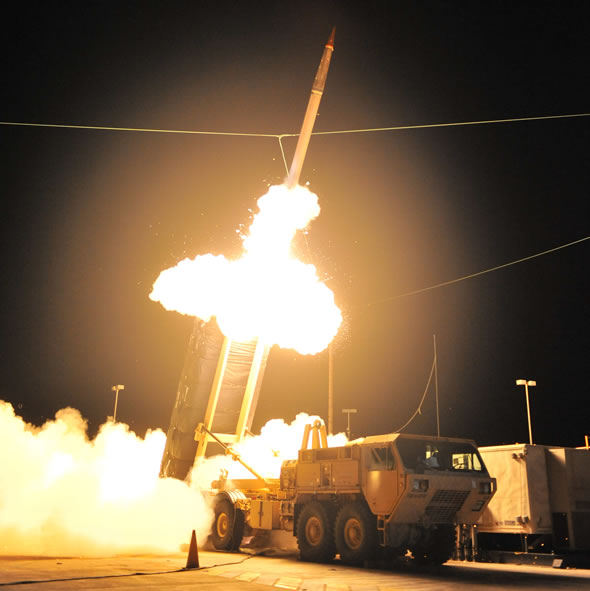Although South Korea approved the planned deployment of the U.S. Terminal High-Altitude Area Defense (THAAD) systems in the Republic of korea, Seoul insists the system will operate autonomously and independently of the U.S. regional missile defense system. Washington has deployed a network of land and sea-based radars, interceptors, and command centers to protect its bases in the Pacific from potential missile attacks from North Korea, Russia or China.
Seoul announced on July 8 that it would allow a U.S. THAAD battery to be stationed in the country after months of deliberation. The site selected for the U.S. missiles is near the rural town of Seongju in the southeastern part of the Korean peninsula. The site is expected to become active in 2018. The new assets are expected to protect the entire area of South Korea and the U.S. forces stationed in the country.
Korean Defense Minister Han Min-koo’s remarks made at the National Assembly policy review session come after speculations that the deployment of the THAAD system in South Korea will invariably lead to the Seoul’s joining the Washington-led missile defense system which is seen by some as a move to isolate China. Yonhap news agency reported.
The Seoul government has persistently said that it has no intention of joining the MD system. Instead, South Korea plans to establish the indigenous “Korean Air and Missile Defense” (KAMD) system, to face the evolving threat of North Korean missile and nuclear threats. While KAMD will extend the protection of South Korea, from the outset, it was designed to operate independently of foreign, regional missile defense networks such as those operated in the region by the U.S. Army and Navy.
“In line with this policy, Seoul has stepped up efforts to build up KAMD,” Han Min-Koo said. He made clear that the THAAD to be employed in South Korea will not be sharing information with the wider MD network.
The MD is a sensitive issue because it can alienate neighboring countries such as China and Russia that South Korea wants to maintain good relations with. China, in particular, is Seoul’s No. 1 trading partner, and a key player in Seoul’s drive to get North Korea to give up its nuclear ambitions.
Meanwhile, North Korea is stepping up its missile testing. Yesterday, North Korea tested three ballistic missiles simulating a preemptive strike against South Korean ports and airfields.
The first two missiles fired were short-range Scud variants, and the third was a medium-range Nodong, it was the 25th missile test conducted by North Korea this year. All three were fired into the sea off the east coast of North Korea.
According to North Korean state media, the tests successfully simulated air-burst nuclear detonations, which if accurate and proven, would enable North Korean ballistic missiles to detonate above and out of range of the Patriot missile defense systems currently deployed in Korea.
The United States has available ballistic missile defense (BMD) capability and inventory -including a number of surface vessels carrying AEGIS systems, THAAD Battery in Texas and an Aegis Ashore Site with a TYP-2 Radars in Hawaii and japan that can be quickly activated to counter the North Korean nuclear ballistic missile threats. Other assets include Japanese AEGIS destroyers that also have ballistic missile defense capabilities.




















